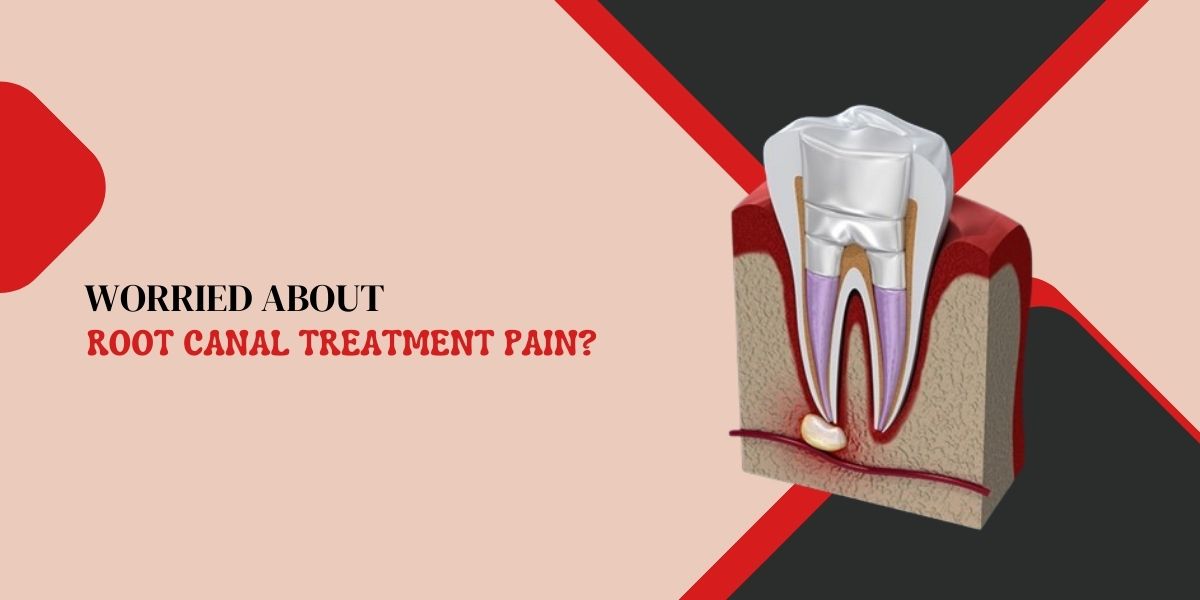
Worried about Root Canal Treatment Pain?
- by admin
It’s normal to feel anxious when you’re told you need a root canal on your painful infected tooth. Let’s break down exactly what’s involved and dispel myths about procedure discomfort. With modern technology and anesthesia, root canal therapy is far less dreadful than you might imagine.
What Exactly Does The Treatment Entail?
Our dentist will numb the area completely so you don’t feel any pain when the procedure starts. A small access hole is made to reach inside the tooth structure and infected nerve tissue. Infection is cleared out and disinfected before carefully sealing. A temporary filling is placed while a custom crown is later made to strengthen your tooth for lasting function.
Why Do Root Canals Have a Bad Reputation for Pain?
In the past, root canal techniques and local anesthesia weren’t as refined, so sensitivity could linger afterwards. But today’s advanced equipment and improved drug formulas render the process itself virtually painless since your tooth is fully numb. Discomfort after is generally mild and manageable.
What Sort of Aftercare is Involved?
Tenderness or soreness for a few days post-procedure is normal as tissues heal. Over-the-counter pain medication helps relieve sensitivity while avoiding chewing near the temporary filling. Within weeks, a custom crown restoration provides durable protection. Prompt care prevents the infected tooth from worsening into a serious dental emergency.
What Causes an Infected Nerve Needing Root Canal Therapy?
A tooth’s inner nerves, blood vessels and tissues reside in hollow chambers and narrow canals inside. Decay from consuming sugary and acidic foods or drinks can penetrate through enamel and dentin over time, allowing bacteria to invade deep inside the tooth structure. As infection inflames the inner pulp tissue, it can die off. Root canal treatment becomes imperative for clearing out diseased remnants so infection and pressure doesn’t spread to surrounding bone causing deterioration and permanent tooth loss.
Why Does an Infected Tooth Hurt So Much?
Nerves send pain signals when provoked by inflammation and swelling pressure. The more diseased inner tooth tissue tries to fight the infection, the more rod-like nerve fibers get compressed. These can’t escape the rigid tooth structure, becoming hyper-excitable pain pathways at slightest provocation. Food impact, temperature extremes, and pressure trigger severe discomfort. Total nerve death brings relief but risks major tissue destruction.
Are Multiple Appointments Needed?
Often root canal treatment only requires a single visit, especially for front teeth with single canals. Back molars have more intricate narrow inner spaces needing specialized tools to fully access and disinfect every aspect. After numbness takes effect, our dentist may seal disinfected canals with anti-bacterial paste and temporarily fill the access hole until a second visit to check nerve extinction. Custom crowns require separate precision molding appointments.
How Successful is Modern Root Canal Therapy?
When caught early before major structural damage, root canal treatment success rates exceed 95% on average based on sources like the American Association of Endodontists. Eliminating infected nerve tissue and bacteria prevents further spread while sealing canals protects from recontamination over years. Followup xrays confirm healed bone levels around the tooth. Taking good care of restored teeth also improves prognosis. Success depends on both dentist skill and patient diligence longterm.
What If An Infection Spreads Beyond The Tooth?
If pulp inflammation and pus drainage goes untreated long enough, infection can reach the tip of tooth roots and invade the surrounding jawbone. This causes destruction of periodontal ligaments plus dental abscess formation as pus gets walled off inside bone pockets. Patient experiences throbbing pain, swelling, jaw stiffness, lymph node inflammation and fevers requiring prompt antibiotic treatment and tooth extraction if damage is too severe.
Why Can’t An Infected Tooth Simply Be Removed?
Extracting severely infected teeth seems logically simpler and faster than intricate root canal disinfection of tiny inner tooth spaces. However, immediate removal risks spreading bacteria and diseased tissue through blood circulation to healthier areas of the body. Without fixing infection first, extraction can release a significant pathogen load. Additionally, preserving natural teeth through root canal allows longterm continuity of function for properly chewing, preventing taste loss and adjacent teeth shifting.
What About Root Canal Alternatives?
In some cases where infection is detected very early before it penetrates deeply into tooth structure, more conservative pulp care therapy may control it without full root canal. Our root canal dentist removes superficial decayed areas then applies medicated pulp padding to calm inflammation plus a durable sealant to give the tooth best chance of healing. However, if pulpal symptoms persist despite this gentle treatment, full root canal is required to clear out the inner diseased pulp completely. The goal is to resolve infection before it endangers the entire tooth.
As you can see, while the prospect of a root canal sounds unpleasant, the reality is dental technology and anesthetics provide a comfortable, streamlined treatment. Don’t let fears of pain prevent you from fixing that infected tooth right away! With proper care afterwards, root canal treatment in London prevents tooth loss and more troublesome consequences. Call Emergency Dentists London Pro for more information and after care solution.
It’s normal to feel anxious when you’re told you need a root canal on your painful infected tooth. Let’s break down exactly what’s involved and dispel myths about procedure discomfort. With modern technology and anesthesia, root canal therapy is far less dreadful than you might imagine. What Exactly Does The Treatment Entail? Our dentist will…